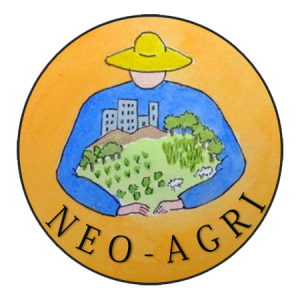The Neo-Agri nonprofit organization was founded in 2015 to promote new peasants settling and farming generational renewal by facilitating knowledge sharing and networking among new peasants and between them and established farmers. In order to improve farmers’ public image and contribute to the development of a new agriculture respectful of humans and the environment.
MISSIONS

– Restore the image of the agricultural profession and bring back people to farming
– Support and assist the new-peasants
– Facilitate networking and co-construction from field to plate
– Promote agroecology for an agricultural transition
The new peasants
In the eyes of many, farming is not considered a desirable career. However, some courageous ones see things differently. After a ‘first life’ outside agriculture, they have decided to become farmers. We call them new peasants. And many of them choose agroecology as an alternative way to enter the food system, promoting both social and environmental sustainability.
In interviews, new peasants told us they find fulfillment in farming. But they also emphasized that farming is risky business, and it takes several years to build a secure livelihood from it. New peasants may have no agricultural heritage, may have little prior agricultural knowledge, and certainly no ‘family land’ to inherit. They often have to learn how to farm without the support of their rural neighbours who consider them ‘outsiders’. Lack of land due to high prices and land grabbing, combined with difficulties in entering markets, make it very difficult to establish a new farm. Financial tools and credit are often unsuited to the small scale, multifunctional types of farms they want to develop. And where appropriate programmes do exist, many new peasants said that they had never heard of them.
Farmers remain a category of people with a negative social image. But this is a huge paradox as they master many skills; they connect with rural and urban people alike, find market opportunities, manage a complicated business, and, importantly, they excel in physically challenging agricultural techniques. And not being educated in family farming traditions, new peasants often turn out to be very innovative. When they work alongside existing farmers, they become a driving force for change based on sustainable, agroecological production.
New peasants are a crucial response to the issue of succession. Many retiring farmers do not have a son or daughter who wants to take over the business, while at the same time, many people are looking for land to start a new farm. More support is needed to bring the two together.
Context
The world population is increasing and consumers request both the cheapest and healthiest products. Simultaneously, modernization of agriculture is beginning to show its limits. Indeed, soils erode; agricultural practices affect both the environment and public health. More and more pesticides are needed to ensure yield and uniformity required for production’s industrialization. Moreover, with the prospect of the exhaustion of fossil fuels, a new form of agriculture capable of feeding the world must be established. Especially knowing the production of a calorie of food demands around 10 calories of fossil energy in industrial agriculture. Going back in time is not a solution because peasant agriculture as it existed in the past and as it still exists in some southern countries will not produce enough to feed everyone. It is therefore necessary to consider a new agroecological agriculture requiring more expertise, combining modernity, traditional methods, environmental respect and high performance.
The upward trend in agriculture is towards mechanization and fewer farmers. This increases rural unemployment. Rural people end up living in cities slums. Simultaneously, urban unemployment rises. Many farmers are retiring; there is an issue of outgoing farmers without incoming farmers.
The issue of farmland transition is multi-generational. The development of solutions must involve and meet both the needs of young and retiring farmers and entering and established farmers. This goes hand in hand with government interventions needed to ensure the environmental transition and revitalization of rural areas.
